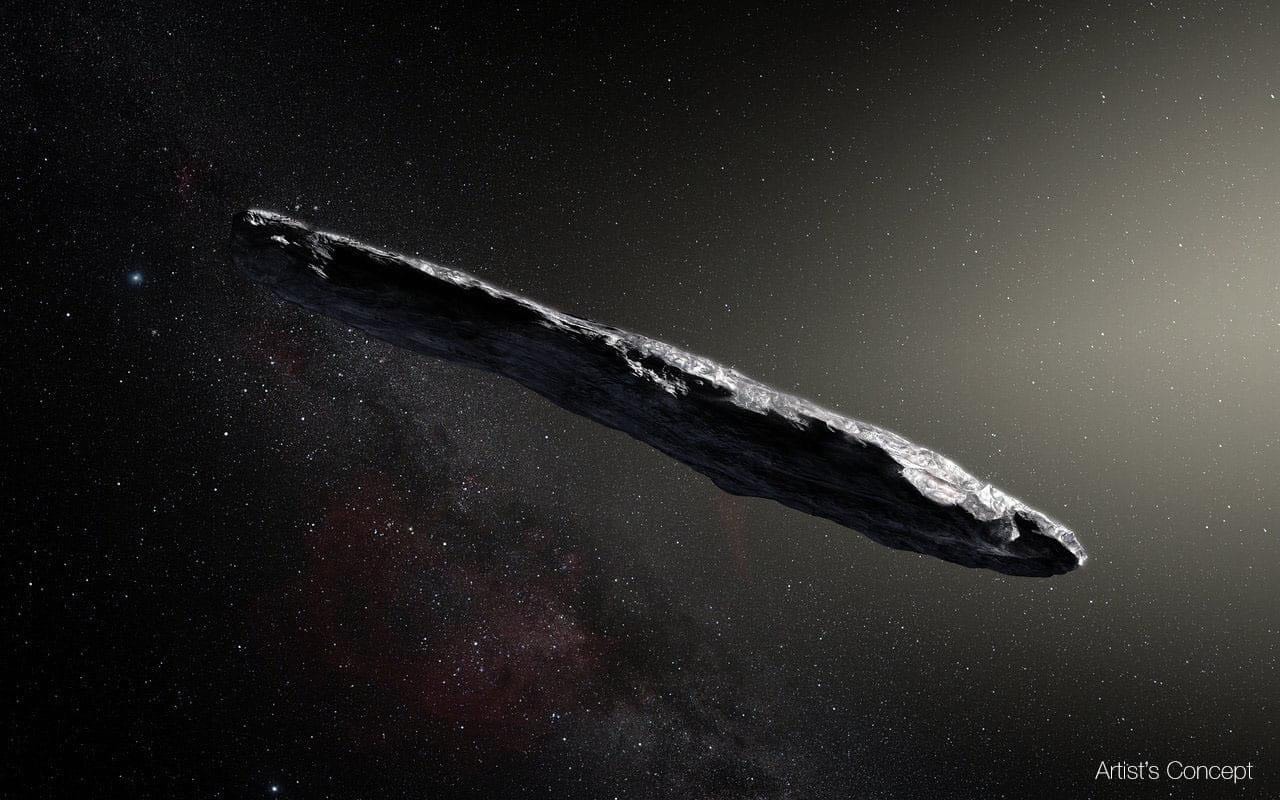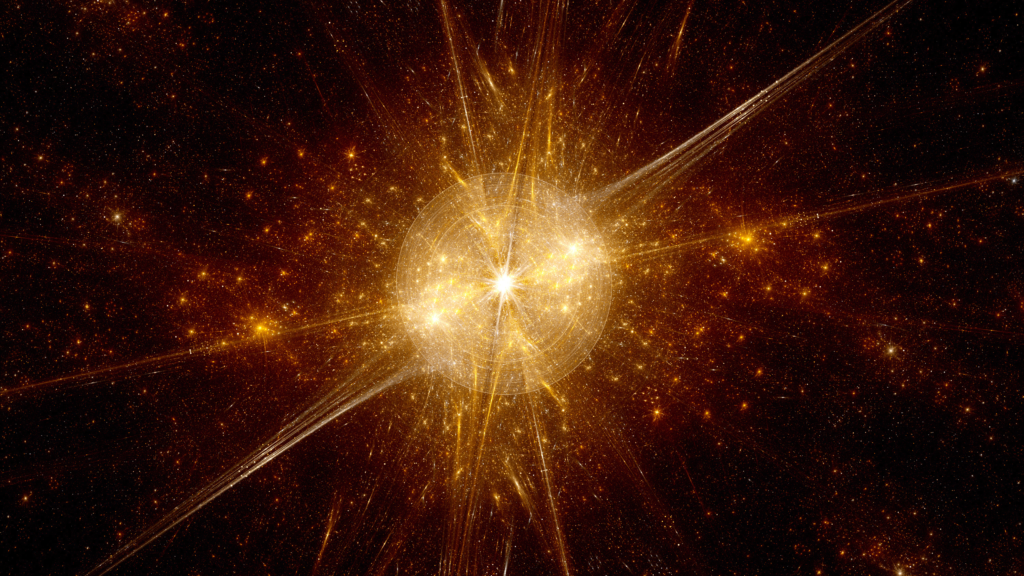Throughout the universe, there are several objects that contradict our current knowledge of physics, astronomy, and science in general. From black holes to interstellar bodies, the universe is home to an astounding number of intriguing things that both captivate and perplex the human mind. This article covers the top five rare objects known to exist in the universe right now. It presents a direct investigation of each scientific anomaly with a focus on current ideas, hypotheses, and explanations for their existence and function in both time and space. The author hopes that after reading this work, readers will have a greater understanding (and appreciation) of these artefacts.
- Voorpwerp Object
- Stellar Object
- Water Comet
- Rare object Haumea Rings
- Oumuamua
Voorpwerp Object
You might be wondering what is a voorpwerp, as you’ve probably never heard of such an object? Well let me explain.
There are super rare astronomical objects like gravitational lenses and Einstein rings whose physics is very well understood.
Then there are super rare astronomical objects whose nature is still exactly unknown to science.

First image from pakistan of a Voorpwerp, an echo of light!
This green object you are seeing is one of the most recent new discoveries in our universe in terms of a new class of object. A galaxy sized green cloud of ionized oxygen lurking next to the spiral galaxy IC2497. Found by a dutch teacher Hanny van Arkel in 2007 while surfing galaxy zoo, the object was named as Hannys Voorpwerp, dutch for “Hannys object“. The object is at a distance of 650million light years and is at a brightness magnitude of 19.
This very weird object is theorized to be a quasars ionization echo, which originated from the galaxy next to it.
Now you might be asking what an ionization echo is?
You’re probably all too familiar with how sound resonates in empty rooms!
Light can also resonate well and create many interesting visuals. The nearby galaxy you see in the picture is older than our own galaxy.
This image was taken through two telescopes pointing at this at the same time for a total of 17 hours and 37 minutes. Half the time was luminance using the 16 inch meade and the other half was RGB from the 8 inch Celestron.
Stellar Object
Astronomers discover new type of astral object

A new stellar object – only the second of its kind – has been found by an international team led by radio astronomers which might change our understanding of neutron stars – some of the densest and most extreme objects in the universe.
Results published in Nature detail how GPM J1839−10, a stellar object 15,000 lightyears away in the Scutum constellation, is breaking known rules about astronomical bodies.
Leading the research were astronomers from Western Australia’s Curtin University node of the International Centre for Radio Astronomy Research (ICRAR).
A type of neutron star is called a magnetar. This GPM J1839−10 energy burst produces powerful bursts of extremely strong magnetic discharges that can be projected to Earth as radio waves. But unlike the magnetar it itself is a rarity. This star is 22 minutes away, so it is not exploding in a few seconds or minutes.
Water Comet

Webb confirmed the first detection of water vapor around a rare type of comet in the main asteroid belt. This suggests that water from the early solar system can be preserved in that region as ice — a breakthrough for studying the origins of water on Earth.
The comet, Comet Read, is called a main belt comet. This is a fairly new classification, and Comet Read was actually one of the original 3 comets to establish this category. Unlike most comets, found beyond the orbit of Neptune in the Kuiper Belt or the Oort Cloud, main belt comets reside in the asteroid belt between Mars and Jupiter. And unlike asteroids, they periodically display a halo and tail.
Comets get their distinctive halos and tails from frozen material vaporizing as they approach the Sun. Although comet-like objects were previously seen in the main belt, Webb has brought us the first definitive proof that water ice is creating that effect.
We do not know how the water reached the earth. But NASA and other space agencies are trying to find out how the water finally got to Earth. We know that water reached the earth through an asteroid, but how! Space agencies are still doing research to understand this as it will help us understand other planetary systems.
Rare object Haumea Rings

Haumea is a dwarf planet that has a highly elliptical shape that makes complete rotations every 4 Earth hours and was the first dwarf planet discovered to have a ring system. Haumea takes 283 Earth years to make one full orbit sound our sun and has a diameter measured at 2,322km or 1,443 miles.
The ring has a radius of approximately 2,287 kilometers, a width of 70 kilometers, and an opacity of 0.5. It is well within Haumea’s Roche limit, which would be around 4,400 km if it were spherical (being nonspherical extends the limit further). The ring plane is inclined 3.2°±1.4° to the equatorial plane of Haumea and roughly aligns with the orbital plane of its bigger, outer moon Hiiaka. The ring is also near the 1:3 orbit-spin resonance with Haumea’s rotation (at a radius of 2,285 ± 8 kilometers from the center of Haumea). The ring is projected to contribute 5% of Haumea’s total brightness.
Chariklo is the largest centaur in our solar system measured with a diameter of 250km or 155 miles that orbits between Saturn and Uranus. Chariklo was the first object confirmed to have rings systems besides the four gas giants. Chariklo has two rings nicknamed Oiapoque and sometimes called Chuí. One ring of Chariklo is 386 km in size and 6.9 km in width while the other ring is 400 km in size and 0.12 km in width.
Oumuamua

In late 2017, astronomers made a groundbreaking discovery when they detected an unusual object hurtling through our solar system. Named ‘Oumuamua‘, which means “scout” or “messenger from afar” in Hawaiian, this interstellar visitor exhibited unprecedented characteristics. Unlike typical celestial bodies, ‘Oumuamua had an elongated, cigar-like shape, measuring about 800 meters long and 80 meters wide. This peculiar form sparked intense curiosity and led scientists to question its origin and composition.
One of ‘Oumuamua’s’ most intriguing features was its non-gravitational acceleration, indicating that it was subject to forces beyond simple gravitational influence. This suggested the presence of an unknown propulsion or outgassing mechanism. While it lacked the visible coma or tail commonly associated with comets, scientists speculated it was likely an asteroid made of rock or metal. However, the exact nature of its composition remained uncertain.
‘Oumuamua’s’ path through our solar system confirmed that it hailed from outside our own celestial neighborhood, marking it as the first confirmed interstellar visitor. Despite extensive efforts, pinpointing its exact origin within the Milky Way remained a challenge. The object’s fleeting visit, passing closest to the Sun in September 2017 before disappearing from view, limited the window for detailed study.
The peculiarities of ‘Oumuamua’ ignited a range of theories, from natural phenomena like outgassing to more exotic speculations, including the possibility of an alien spacecraft. It’s important to note that while these hypotheses stimulate scientific inquiry, they require extraordinary evidence to gain widespread acceptance. ‘Oumuamua’s’ visit serves as a powerful reminder of the boundless mysteries awaiting exploration beyond our solar system, urging scientists to refine their understanding of interstellar objects and the broader cosmic tapestry in which they roam.

